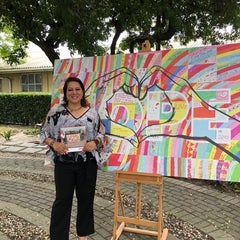Lack of Blood Stem Cell Donors Puts SA Leukaemia Patients’ Rights in Jeopardy
Approximately 14 in every 100,00 people are diagnosed with leukaemia[i] every year. In children, this increases to 271 and is the most commonly diagnosed cancer amongst South African kids.
Cape Town, October 4, 2022 –Approximately 14 in every 100,00 people are diagnosed with leukaemia[i] every year. In children, this increases to 271 and is the most commonly diagnosed cancer amongst South African kids. Leukaemia is a blood cancer that affects blood cells in the bone marrow. But, because there are different types of blood cancers, the incidence rates continue to significantly increase. With this being the 12th deadliest form of cancer in the country[ii], a bone marrow stem cell transplant is often a patient’s only hope of survival. Unfortunately, a mere 30% find a matching donor, compromising patients’ rights to healthcare, human dignity and even life.
Bone Marrow Stem Cell Donation and Leukaemia Awareness Month is marked annually between the 15 August and 15 of October to create awareness around the dire need for donors. With this in mind, Elsabe Klinck, a legal practitioner who specialises in law, regulation and policy within the health sector and a consultant to DKMS Africa, unpacks patients’ rights and the role donors can play in helping them.
Why is Bone Marrow Stem Cell Donation and Leukaemia Awareness Month so important?
If people are not aware, they are unable to contribute and support, but most importantly, without awareness, both donors and patients don’t know that they have rights, and therefore cannot enforce these. The starting point of activism is awareness.
What rights do patients have?
Healthcare is a human right. Any limitations to this must be reasonable and rational; in short, they must make sense. In practical terms, these limitations must also be defensible in terms of evidence-based medicine.
Currently, the public healthcare system does not fund international donor matches as well as unrelated donor matches. Only a few medical schemes will fund transplants from these types of donors.
Although both the public and private sectors will fund a transplant from a relative, the likelihood of a match from within a patient’s family is only 25%, meaning that there is a 75% chance that they will need a transplant from a non-related donor. While doctors will try to treat the patient by alternative means, denying patients access to donations of this nature not only violates their right to healthcare but also their rights to human dignity and life.
The law must catch up with clinical medicine so that all potential recipients and donors are recognised and funded, both in the public and private sectors. In the end, this will increase the chances of patients receiving a cure.
How can donors help?
Eligible donors are aged between 18 and 55 years and must be in generally good health. Before any donation takes place, the prospective donor will be asked to fill out a detailed health questionnaire to ensure their suitability early on. They will then be required to provide a blood sample, which will go for confirmatory typing. Their blood will also be checked for other infections, such as HIV or hepatitis viruses.
A transplant is a non-invasive procedure where a medical practitioner will draw blood from the donor’s arm. The blood collected is circulated through a machine that then separates the blood stem cells from the blood. The remaining blood components are then returned back to the donor via their other arm. Those donating blood through this method will need to take time off work for their medical examination, plus another two days for the blood stem cell collection.
Those donating via the bone marrow collection method, which entails a needle being inserted through the bone and into the bone marrow to withdraw the liquid portion of the bone marrow, will need to take one week of leave from work or study. This will cover the donor’s three days in the hospital plus a four-day recovery period.
Why do you think there is a disparity between the number of patients needing donations and the number of registered donors? What needs to change?
There is a lack of awareness about blood diseases and misconceptions around the donor registration process. In South Africa specifically, there are cultural barriers to becoming a stem cell donor that need to be addressed.
South Africa is also a genetically highly diverse population, but this is not adequately represented in international donor registries (which consist mostly of white donors); therefore, it is imperative for local registries to grow and service our population.
Klinck concludes by saying, “Blood stem cell donation is a human rights issue. We need to move towards more activism for patients. We must insist that the law as well as the way in which we help patients is changed!”
To register, please sign up at: https://www.dkms-africa.org/register-now. For more information, contact DKMS Africa on 0800 12 10 82.
[i] https://seer.cancer.gov/statfacts/html/leuks.html
[ii] https://gco.iarc.fr/today/data/factsheets/populations/710-south-africa-fact-sheets.pdf


